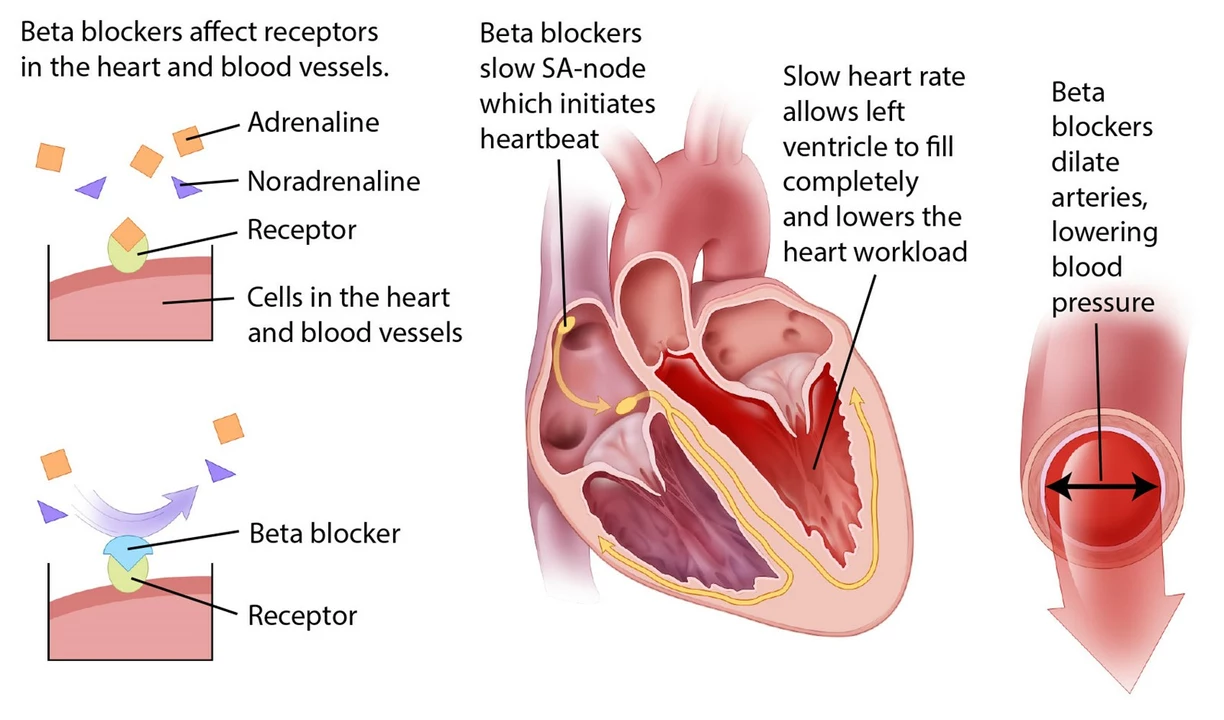Atenolol: Uses, Dose, Side Effects, and Practical Tips
Atenolol is a beta-blocker doctors prescribe for high blood pressure, angina, and certain heart rhythm problems. It lowers heart rate and reduces the heart's workload so blood pressure drops and chest pain eases. Many people take it once a day because atenolol works steadily over 24 hours.
Typical doses range from 25 mg to 100 mg daily, depending on the condition and kidney function. If you have reduced kidney function your doctor will likely start lower and adjust slowly. Never change your dose without checking with your prescriber, because stopping atenolol suddenly can cause fast heart rate, chest pain, or even a heart attack in some people.
Common side effects and what to watch for
Common side effects include tiredness, cold hands or feet, slow heartbeat, and lightheadedness when standing up. Some people notice sleep changes or low mood. Atenolol can also mask signs of low blood sugar in people with diabetes, so check glucose more often when starting or changing dose. If you feel faint, have a very slow pulse, or develop breathing trouble, contact your doctor.
Interactions and safety tips
Atenolol can interact with other heart drugs like certain calcium channel blockers and digoxin, making slow heartbeat worse. Nonsteroidal anti-inflammatory drugs (NSAIDs) may reduce atenolol's blood pressure effect. Avoid starting or stopping other heart medicines without medical advice. People with asthma or severe COPD should use atenolol cautiously because it can tighten airways, even though it targets heart beta receptors more than lung ones.
Take atenolol at the same time each day to keep levels steady. If you miss a dose, take it when you remember unless it's near the time for your next dose—do not double up. Monitor your blood pressure and heart rate at home if your doctor recommends it. Carry a list of all medicines and show it at every clinic visit.
Pregnant or breastfeeding women should discuss risks and benefits with their provider; some beta-blockers are used in pregnancy but require close follow-up. Also tell your doctor if you have diabetes, kidney disease, heart failure, or depression before starting atenolol.
If side effects become troublesome, your doctor may lower the dose, switch to another beta-blocker, or try a different class of blood pressure medicine. Good communication with your healthcare team and regular checkups make atenolol therapy safer and more effective.
Plan follow-up with your prescriber within 1 to 4 weeks after starting or changing dose so blood pressure and heart rate can be checked. Typical targets are blood pressure below your doctor's goal and resting heart rate usually above 50 beats per minute unless otherwise advised. If you need surgery or an invasive test, tell the medical team you take atenolol. Store pills in a cool dry place and keep them away from children. Use a pillbox or phone alarm to avoid missed doses. If you want to stop atenolol, your doctor will advise a gradual taper over one to two weeks to reduce rebound symptoms.
Atenolol is a beta-blocker that I've recently researched in depth to better understand its uses and effects. It primarily helps in treating high blood pressure, angina, and irregular heartbeats by blocking the action of certain chemicals in the body. This medication has some common side effects like dizziness and fatigue, but it's essential to consult your doctor before stopping its use. In addition, it's crucial to follow the prescribed dosage and monitor any changes in our health. Overall, Atenolol can be an effective solution for managing specific heart-related conditions, but always remember to seek medical advice for proper guidance.

